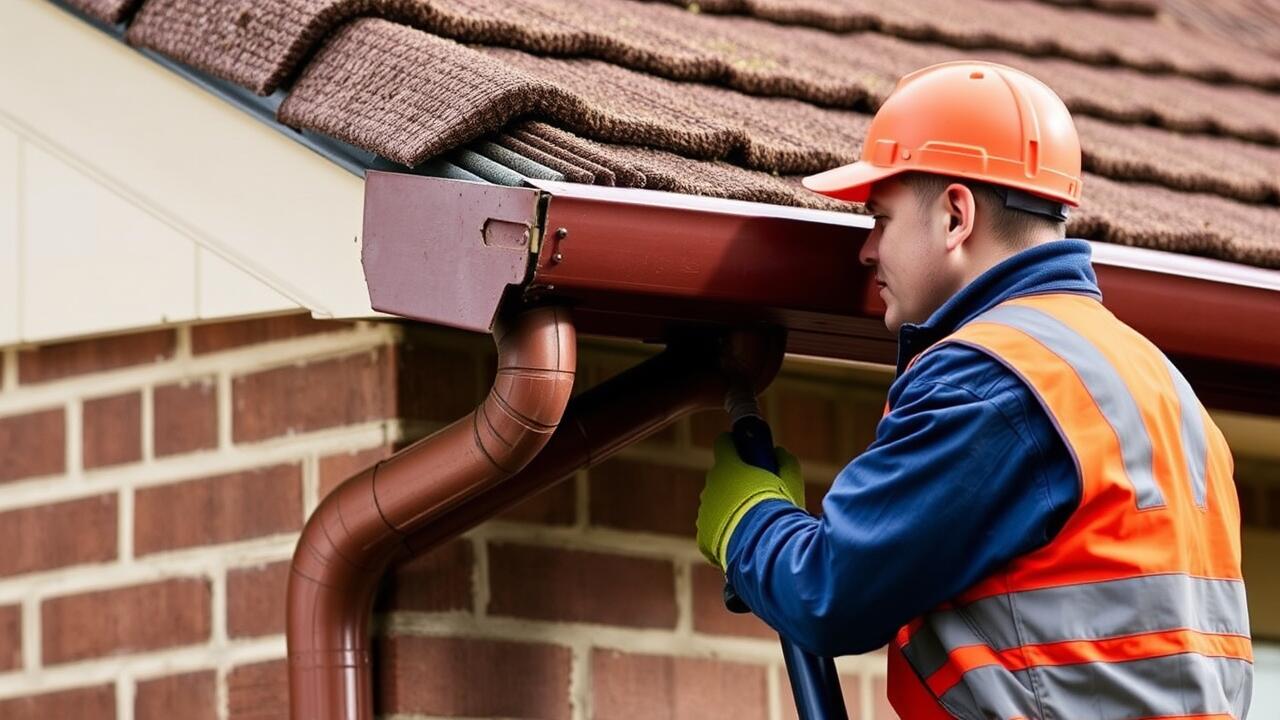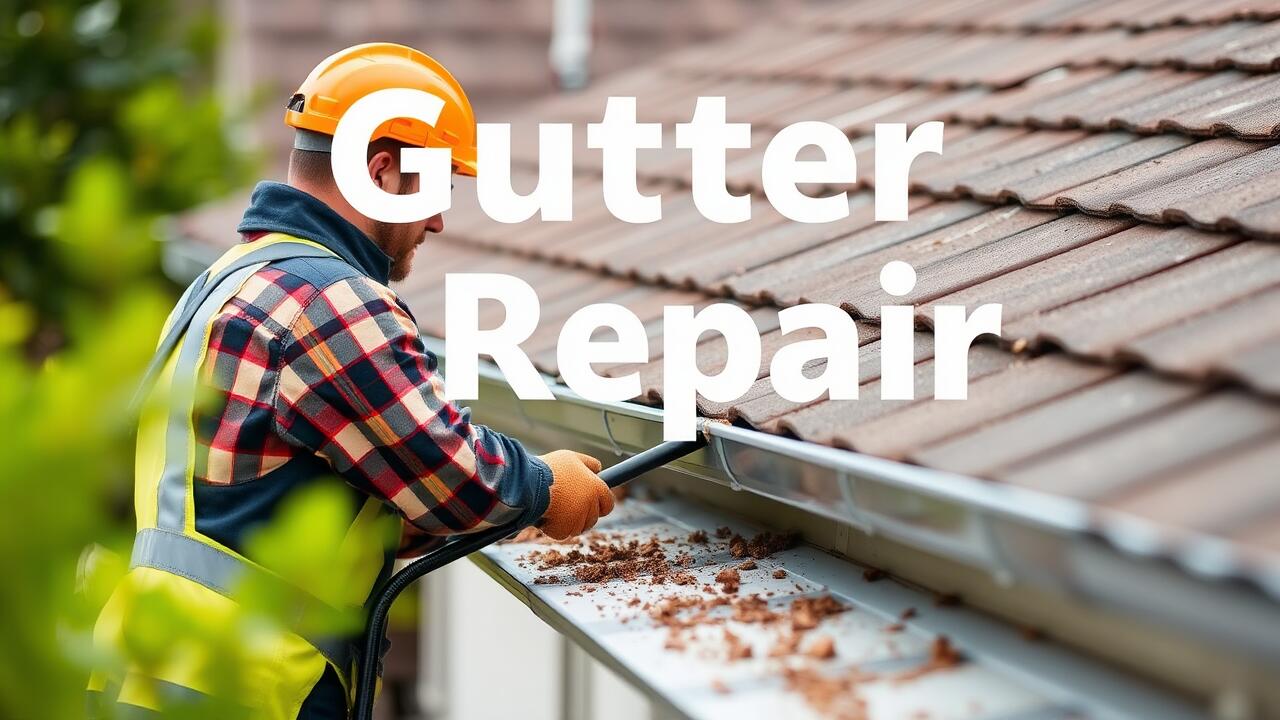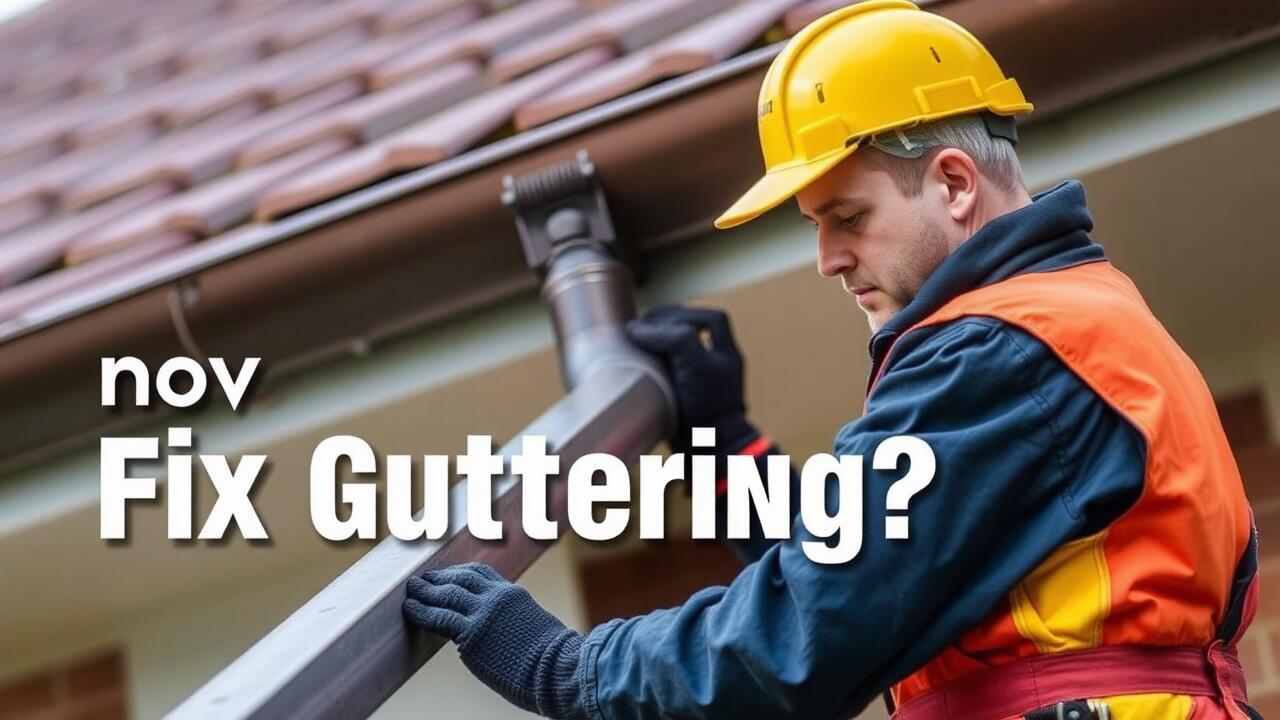
How Gutters are Attached to the Roof
Gutters are typically attached to the roofline using a combination of brackets and fasteners. These brackets are securely mounted to the roof's fascia board, which is the board that runs along the edge of the roof. The angle of the gutters is critical for ensuring water flows correctly towards downspouts, facilitating efficient drainage. If they are not angled properly, water can pool over the edges and lead to damage, making the initial installation crucial.
Regular inspections can help identify any loose brackets or damaged sections of the gutter system. Homeowners should look for signs of sagging or misalignment, as these can indicate the need for adjustments. Many may search for "Gutter Repair near me" to find professionals who can address any issues. Proper attachment is essential for longevity and effectiveness, ensuring that gutters continue to protect the home’s foundation and siding from water damage.
The Importance of a Proper Angle
The angle at which gutters are installed is crucial for ensuring effective water drainage. If gutters are too flat, water can pool, leading to overflow and potential damage to the roof and fascia boards. Conversely, if the angle is too steep, debris can accumulate, resulting in clogs that hinder proper flow. Achieving the right pitch is essential to maintaining the functionality of the gutter system.
When assessing the angle of your gutters, it may be beneficial to seek professional help. A quick search for "Gutter Repair near me" can connect homeowners with local experts who can evaluate the installation. Properly angled gutters not only enhance performance but also extend the lifespan of the entire system. Regular inspections can help identify any misalignment and prevent costly repairs down the line.
Maintenance Tips for Gutters
Regular maintenance is essential for ensuring that your gutters function effectively. This involves cleaning them at least twice a year, preferably in the spring and fall. Remove leaves, twigs, and debris that can accumulate and hinder proper water flow. Inspect the gutters for any signs of rust, leaks, or damage, and make necessary repairs to prevent bigger issues from developing. If repairs are beyond your expertise or tools, searching for "Gutter Repair near me" can connect you with local professionals who can help.
Additionally, check the downspouts to ensure they are clear and directing water away from the foundation of your home. It’s important to monitor the pitch of the gutters; they should slope toward the downspouts to facilitate efficient drainage. A slight adjustment may be needed over time. Be mindful of any overhanging trees that may contribute to debris buildup, and consider trimming them back. Following these tips will help extend the life of your gutters and prevent costly repairs.
Preventing Clogs and Damage
Regular cleaning is essential to prevent clogs and damage in your gutters. Debris such as leaves, twigs, and dirt can accumulate, causing water to overflow or back up. This situation can lead to water damage to your roof and foundation. Establishing a routine maintenance schedule ensures that your gutters remain clear.
If you notice any signs of blockage, addressing them promptly can save you from more extensive repairs later. Consider searching for "Gutter Repair near me" if you require professional assistance. Experts can help identify problem areas and provide solutions to keep your system functioning effectively. Regular inspection and timely repairs are crucial for the longevity of your gutters.
Identifying Issues with Gutters
Identifying issues with gutters is crucial for maintaining the integrity of your home. Homeowners should regularly inspect their gutters for signs of sagging or misalignment. A gutter that is pulling away from the roofline can lead to poor water drainage. Watch for any visible damage, such as cracks or holes that could result in leaks when it rains.
Another key indicator that your gutters may need attention is the presence of water damage around your home. Puddles forming near the foundation or stains on the exterior walls suggest that water is not being directed away properly. If you notice these problems, searching for "Gutter Repair near me" can connect you with professionals who can assist in restoring proper functionality. Prompt repairs will help prevent more extensive damage in the future.
Signs That Your Gutters Need Attention
Inspecting your gutters regularly can reveal several signs that they need attention. Look for sagging or pulling away from the roofline, which indicates that they may be overloaded with debris or improperly secured. Additionally, check for rust spots or visible cracks. These issues can lead to leaks that compromise your home’s foundation and exterior. If you notice any of these problems, it's essential to act quickly.
Water pooling around the foundation or dripping from the eaves is another clear indicator of potential gutter issues. If water is not directed away effectively, it can lead to costly damage. Homeowners may also see stains on the siding or mold growth, pointing to overflow from clogged or damaged gutters. Searching for “Gutter Repair near me” can help locate professionals who can assess and address these concerns before they escalate.
FAQS
What materials are commonly used to fix gutters to a roof?
Gutters are typically fixed to a roof using materials such as aluminum, vinyl, steel, or copper brackets and hangers, which provide sturdy support.
How do I know if my gutters are securely attached?
You can check for secure attachment by looking for any sagging or loose sections and ensuring that the brackets or hangers are firmly fastened to the roof and fascia.
Can I install gutters myself, or should I hire a professional?
While DIY installation is possible for those with experience and the right tools, hiring a professional is recommended to ensure proper alignment, angle, and secure attachment to the roof.
What is the proper angle for gutters to ensure effective drainage?
Gutters should be installed at a slight angle, typically around 1/4 inch for every 10 feet, sloping toward the downspouts to ensure effective water drainage.
How often should I inspect my gutters for maintenance?
It's advised to inspect your gutters at least twice a year, preferably in the spring and fall, or after severe storms to check for clogs, damage, or loose attachments.



